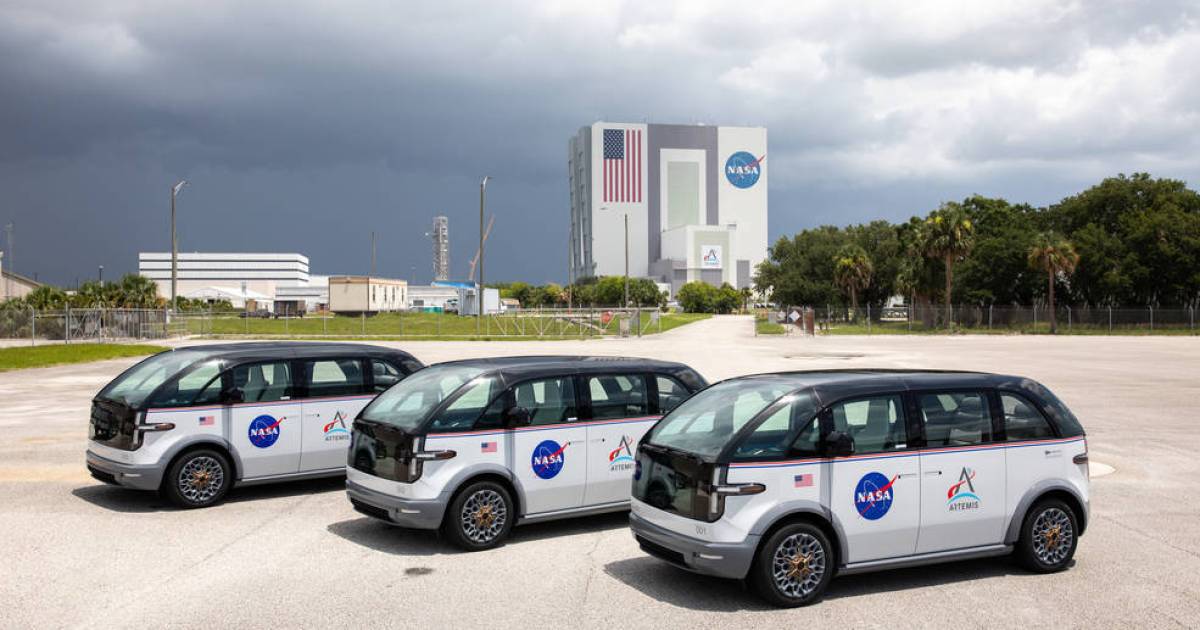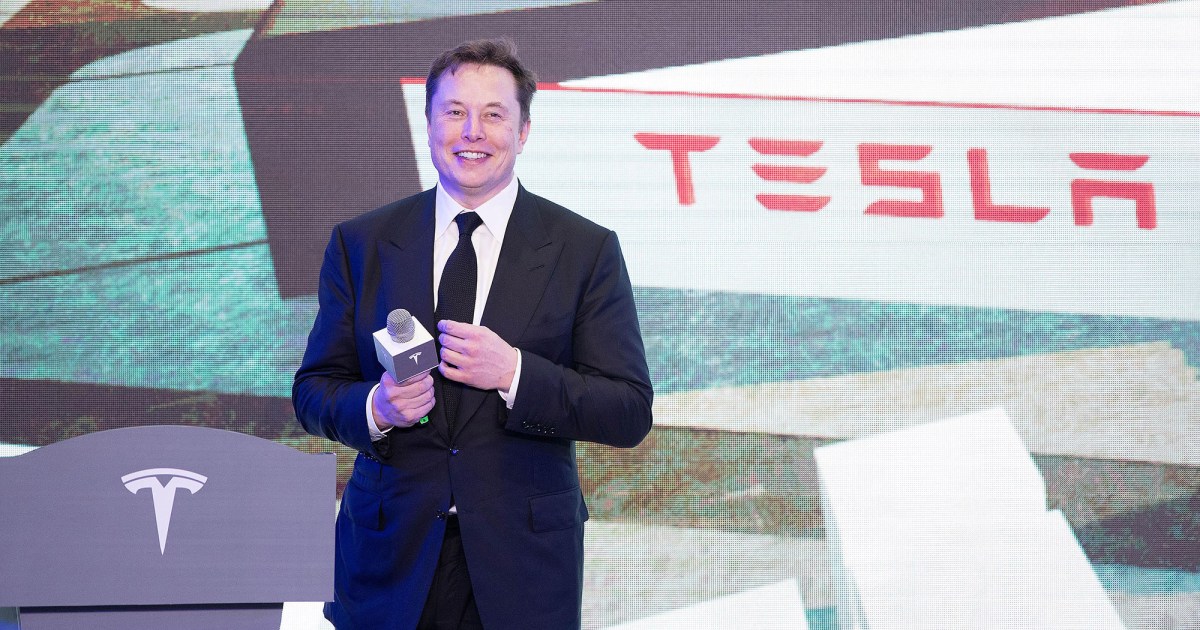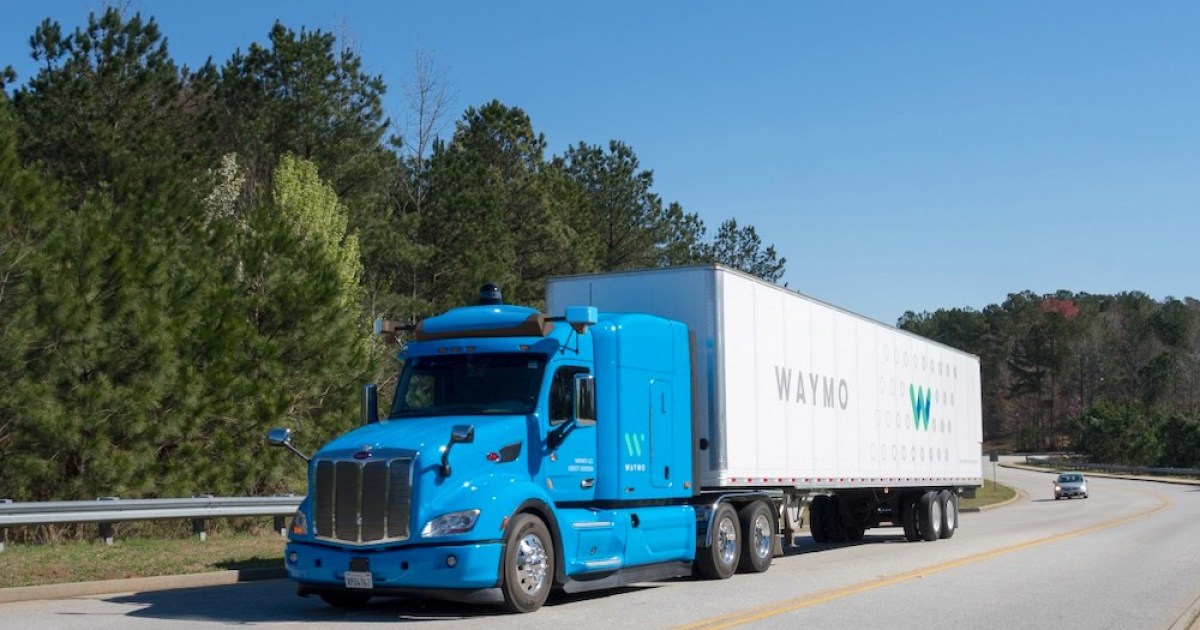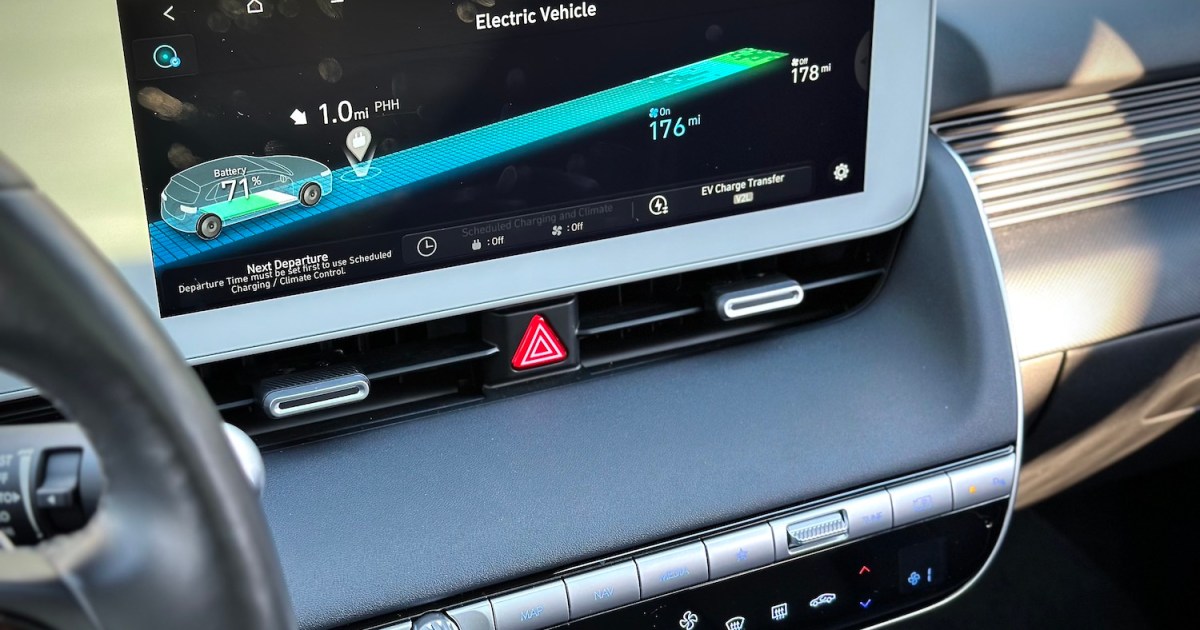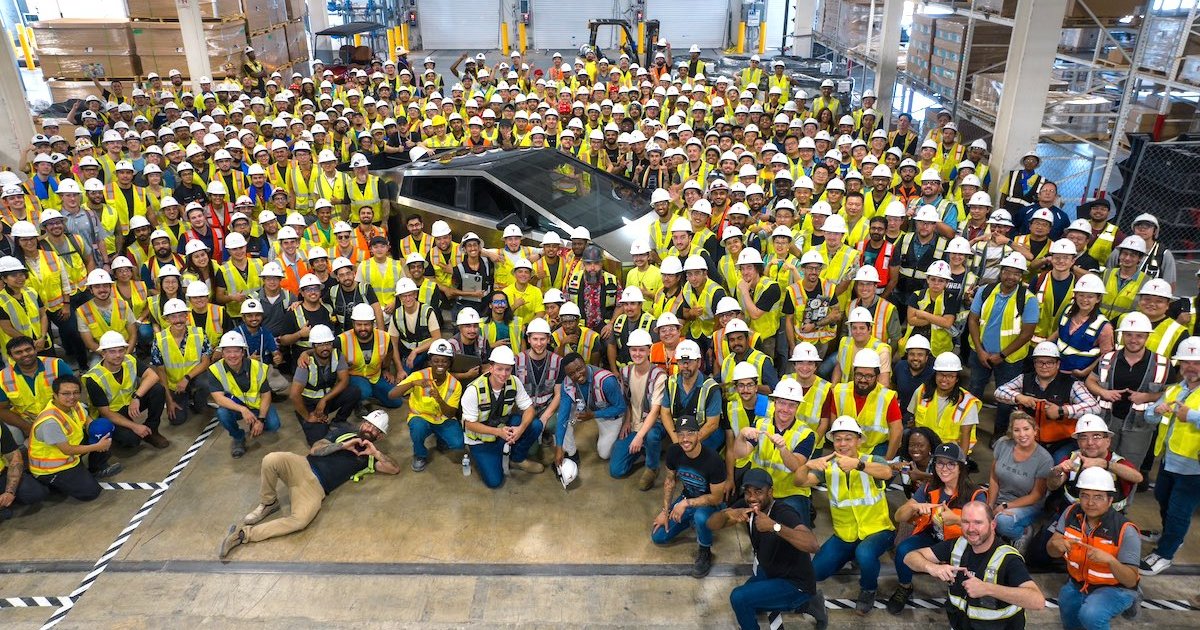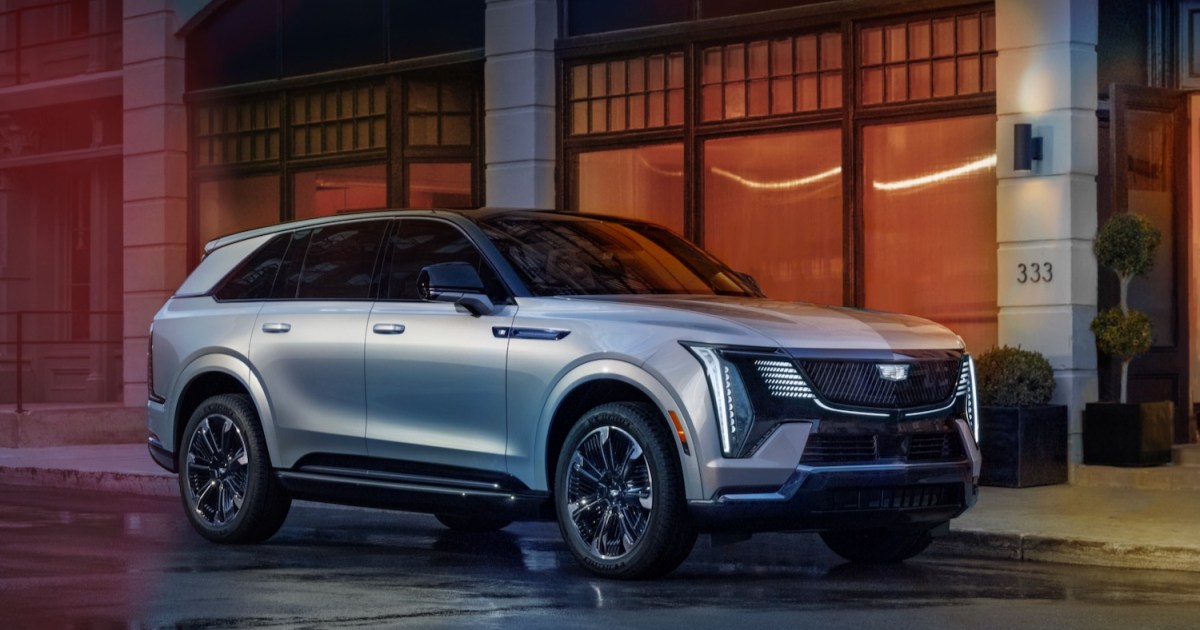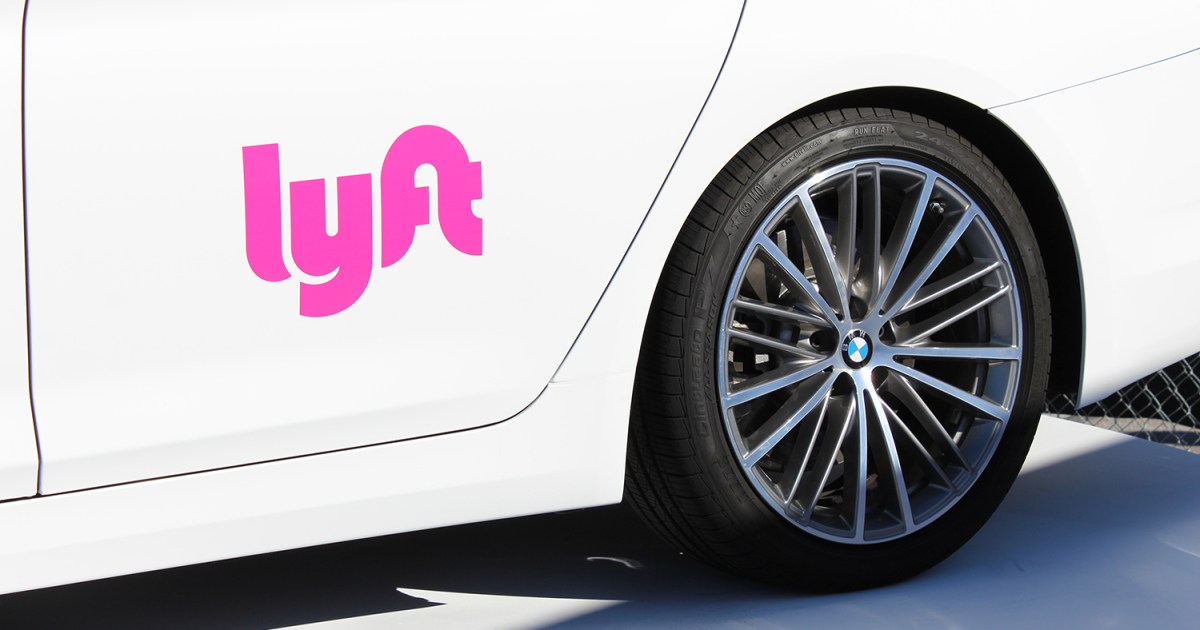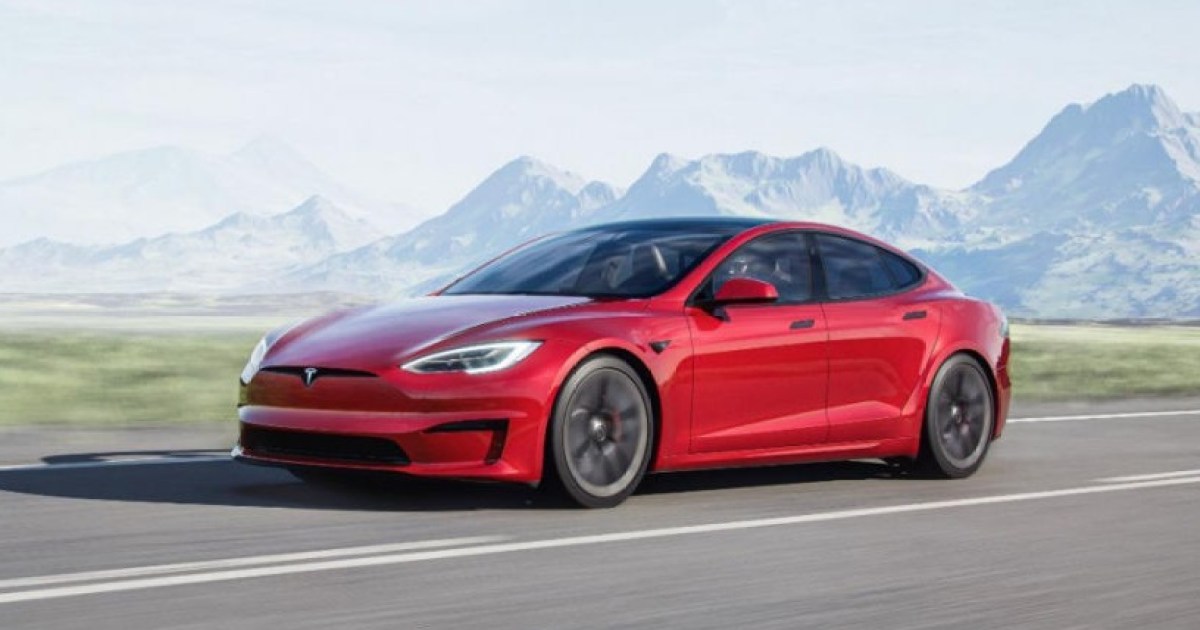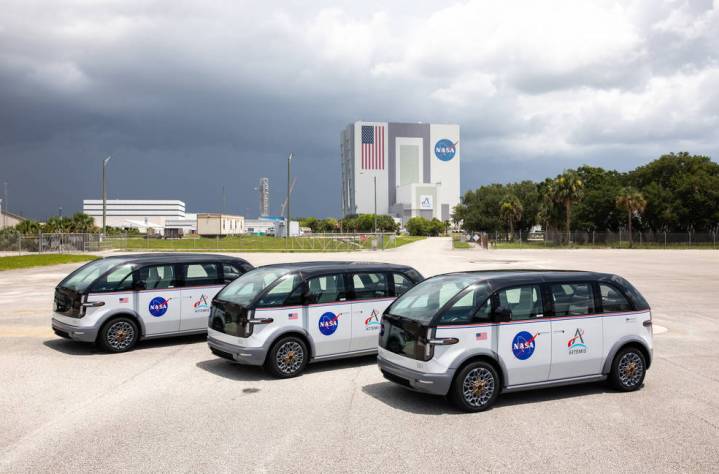 NASA's new electric crew transport vehiclesNASA recently unveiled three all-electric crew transportation vehicles designed for the Artemis missions. These zero-emission vehicles, developed by Canoo Technologies, will transport astronauts from the crew quarters to Launch Complex 39B at Kennedy Space Center in Florida. These cutting-edge vehicles represent a significant step towards sustainable space exploration.
NASA's new electric crew transport vehiclesNASA recently unveiled three all-electric crew transportation vehicles designed for the Artemis missions. These zero-emission vehicles, developed by Canoo Technologies, will transport astronauts from the crew quarters to Launch Complex 39B at Kennedy Space Center in Florida. These cutting-edge vehicles represent a significant step towards sustainable space exploration.
A New Era of Astronaut Transportation
These specially designed electric minivans can accommodate four astronauts in their full launch spacesuits, along with essential personnel like a spacesuit technician and specialized equipment. The vehicles will play a crucial role in upcoming Artemis missions, starting with Artemis II, scheduled for November 2024. This mission will send four astronauts on a lunar flyby, marking a significant milestone in human spaceflight.
From Astrovans to EVs: Modernizing the Journey to Launch
Charlie Blackwell-Thompson, NASA’s Artemis launch director, expressed pride in the new vehicles and emphasized their focus on crew safety and comfort. This transition from the traditional “Astrovans” used in Apollo and Space Shuttle programs signifies NASA’s commitment to modernizing its operations. While the route to the launchpad remains familiar, the mode of transportation reflects the advancements in technology and sustainability.
 Astronauts in the new electric vehiclesOver the next year, these electric vehicles will be integrated into astronaut training exercises at Kennedy Space Center. In approximately 16 months, they will transport the Artemis II crew to the Space Launch System (SLS) rocket, from which they will board the Orion spacecraft for the first crewed lunar flight in five decades.
Astronauts in the new electric vehiclesOver the next year, these electric vehicles will be integrated into astronaut training exercises at Kennedy Space Center. In approximately 16 months, they will transport the Artemis II crew to the Space Launch System (SLS) rocket, from which they will board the Orion spacecraft for the first crewed lunar flight in five decades.
Paving the Way for Future Lunar Missions and Beyond
A successful Artemis II mission will be pivotal in advancing NASA’s long-term goals. It will pave the way for the first crewed lunar landing since 1973 and contribute to the establishment of a permanent lunar base. This base is envisioned as a stepping stone for future human missions to Mars, marking a new chapter in space exploration.
A Sustainable Journey from Earth to Mars
The adoption of all-electric vehicles for astronaut transportation reflects NASA’s commitment to environmental responsibility and sustainable space exploration. The journey from an Earth-based EV to a Mars lander symbolizes the remarkable advancements in technology and the ambitious vision of human spaceflight in the 21st century. These innovative vehicles are not just transporting astronauts; they are transporting us towards a future of sustainable space exploration.



